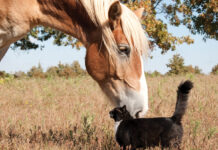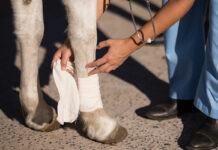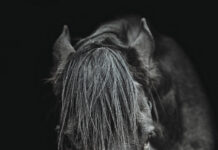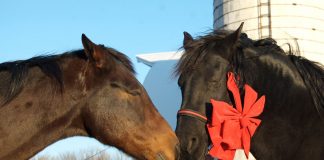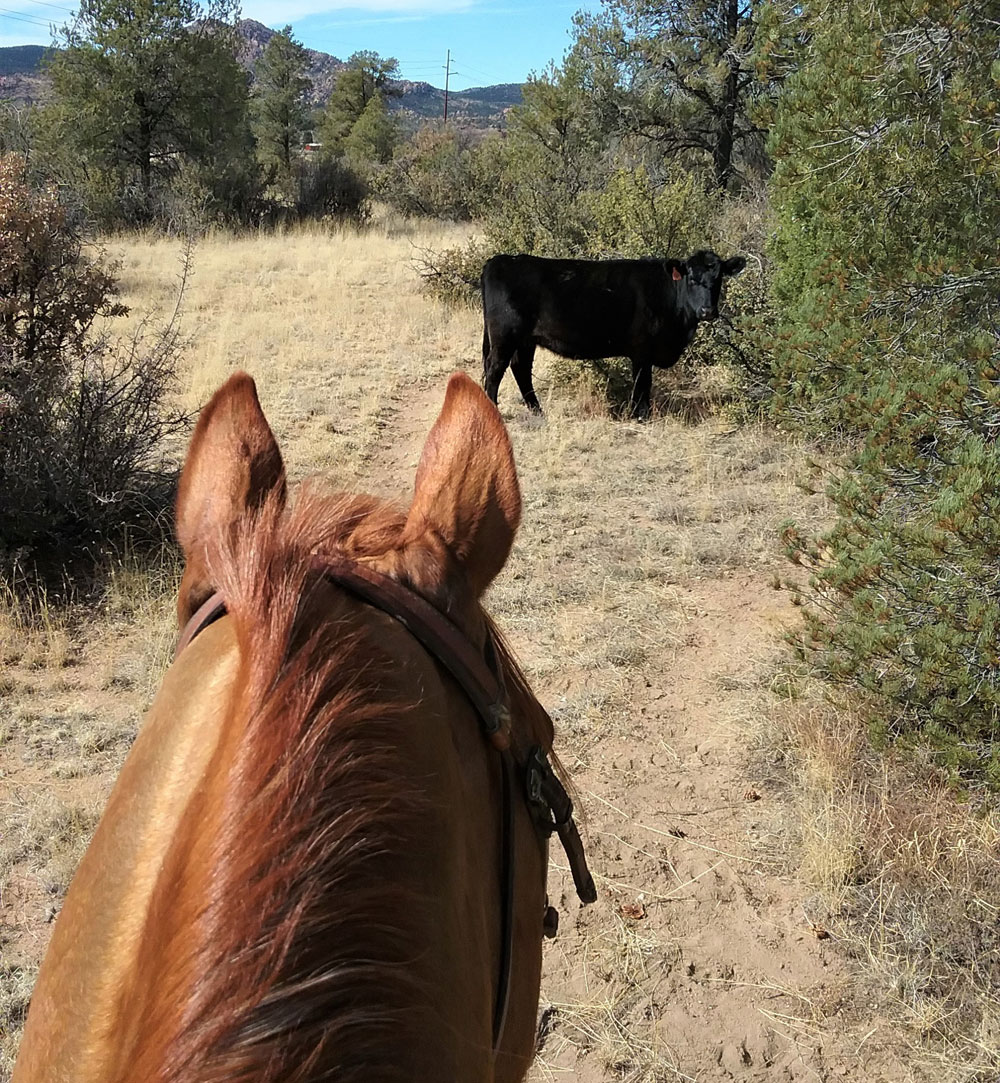
Yet there is one area where Wally, the western wonder horse, is lacking. He is utterly woebegotten when it comes to cow sense.
Urban Cowhorse
For all the years I had Wally in Southern California, this deficiency was unimportant. Wally and I were more likely to cross paths with a diesel tractor-trailer rig than any sort of bovine. Sure, our somewhat rural horsekeeping community was rife with critters like pygmy goats, geese, burros and potbellied pigs, and Wally grew accustomed to those members of Noah’s ark. But cows? Nada.
Now that Wally and I live in central Arizona, we can’t seem to avoid cows. Or steers. Or heifers. Or whatever the common moo du jour the locals choose to use. Ranching is a way of life out here.
Three of the most popular social activities are roping, team penning and ranch sorting. Needless to say, each requires the participation of a horse willing to chase after a cow in some fashion. Thus, I am perpetually declining invitations to such events.
Please understand that I fully appreciate the legendary prowess of western horses that do possess cow sense. I’m frequently amazed at cutting horses that instinctively outwit and outmaneuver 800 pounds of riled-up beef. I’ve also come to speak the lingo of the prospective cowpony. I’ve learned that a good indication of talent is a colt’s compunction to “look at a cow,” or better yet, to “watch a cow.” Both of these portend the horse’s ability to eventually “work a cow.”
Wally, I’ve learned, is mostly talented at working at pulling off his daysheet. His other talents include watching me prepare his bucket of pellets and looking at me (with snide disdain) whenever I fire up the electric clippers. Bottom line: Wally would flunk out of cowpony college.
Despite being bovine-averse, Wally is unable to totally avoid cattle. Nestled around the base of our mountain range is a wide expanse of high prairie rangeland. It’s prime real estate for grazing Angus cattle, and ranchers can lease short-term grazing rights from the state.
That’s the main reason why every gate Wally and I pass through—whether it’s marked as a forestry gate or livestock gate—must be firmly and reliably shut. Cattle could be lurking among the tall grass that grows between the groves of oaks and stands of pines.
Horse Cow Sense: Turning Over a Moo Leaf
Fortunately, there’s one herd of Angus cows and half-grown calves that are remarkably docile. They graze on a chunk of Arizona state trust land, and Wally and I cross through there on our way to the Williamson Valley trailhead. Although it’s taken about a dozen encounters, Wally has gotten to where he tolerates the presence of the herd, even if its members insist on lounging across the very pathway on which we’re traveling.
Knowing Wally as I do, I believe he’s actually transfixed by them. They move with slow, deliberate steps, and blink their huge eyes slowly as if just waking from a long nap. Each one wears a set of ear tags, one red, the other bright green, like a mismatched pair of chunky plastic earrings from the disco era. The tags are numbered and serve to identify ownership and specific grazing districts.
One young heifer, who happens to be tag number H07, is especially friendly. I’ve decided she’s the designated ambassador of the group. Sweet H07 makes a habit of lumbering toward Wally and me each time we approach, greeting us with a big outward larp of her huge pink cow tongue.
There’s something disarming about H07. I’m confident that Wally agrees because his apprehension about mingling with the moos has dissipated. Don’t get me wrong. I’m certainly not about to sign up for next month’s team penning contest. But at least thanks to H07, I can now officially state that Wally will finally watch a cow.
This article about horse cow sense originally appeared in the July 2018 issue of Horse Illustrated magazine. Click here to subscribe!

